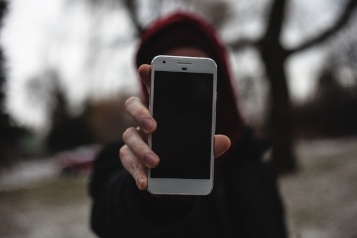May 18, 2017

The customer experience is in the spotlight again. Are you confident that your employees on mobile devices are saying the right things to your customers?
For years, companies have invested in tools, training and processes to improve the customer experience. Research shows that seemingly minor increases in retention and satisfaction can flow to the bottom line in a big way.
But despite all these efforts, companies in a range of sectors still suffer high-profile customer relations failures.
The truth of the matter is that much of the interaction between your customers and your employees takes place outside of the scope of your quality assurance programs.
Obviously direct, face-to-face communications and actions can have a major impact on the customer experience. These can be hard to track, assess and correct when they go wrong.
But there are some not-so-obvious “blind spots” in the customer experience quality process. The most critical of these is in the mobile communications area.
Simply put, your employees’ mobile devices often are not in the scope of the quality assurance process. What are your employees saying to customers in these critical interactions?
The Mobile Blind Spot
It might be a call between a field technician and a customer awaiting a service visit. It might be a service representative in your contact center transferring a call to a technical specialist to troubleshoot a problem.
The Blind Spot comes about because the devices used by the increasingly mobile workforce are typically not integrated into the same quality assurance processes that your landlines and contact center systems use.
But now mobile devices are everywhere and used by almost everyone. It’s impossible to ignore this blind spot for much longer and not run the risk of customer relations problems.
How do you get out in front of this problem and eliminate the customer experience mobile blind spot?
Customer Engagement Mobility
Bringing communications on mobile devices into your direct control is a primary benefit of Mobile-X from Tango Networks.
Mobile-X effectively turns an employees’ mobile device into a landline desk phone in terms of features, control and compliance.
From the employees’ point of view, they can activate business calling features, make calls that are identified with the corporate customer care number, and even use their personal mobile devices in a Bring Your Own Device (BYOD) program.
From your point of view as a communications or IT manager, you can log, monitor and record calls on mobile devices using the same quality assurance and workforce optimization tools you use with landlines.
You can enforce policies on all mobile calls and keep employees’ business and personal calls separate, even on personal devices.
Best of all, Mobile-X operates seamlessly with your existing communications systems. It enables employees to use the native dialers of their phones to perform business functions. That means there is no learning curve and no time-consuming IT training programs.
Now Mobile-X from Tango Networks is the premier communications solution for companies implementing work-from-home, remote worker, teleworker, telecommuting, connected worker and business continuity programs.
